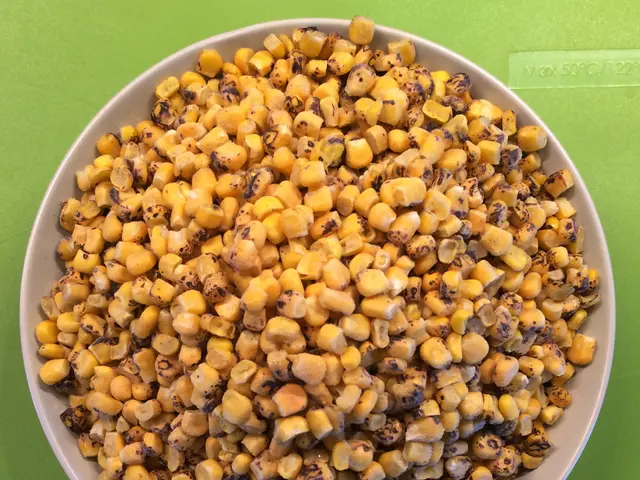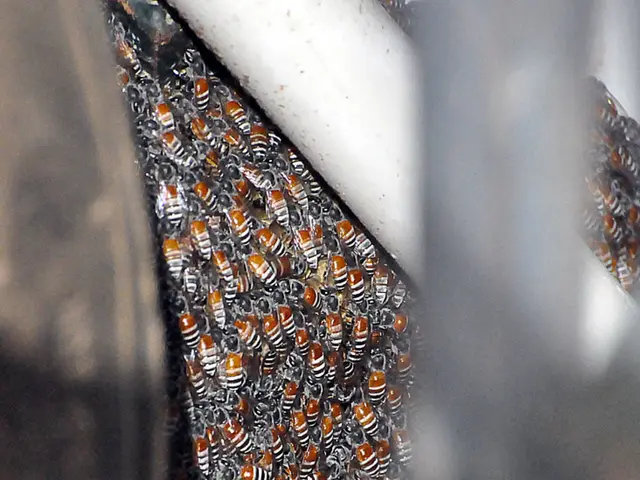Guide on Calcium Chloride: Its Nature and Application
Let's dive into the world of calcium chloride and learn how to use this badass salt in your homemade fermentations!
Calcium chloride is a godsend for those wanting to preserve the crunch in their goods, not just in canning, but in fermentation too! Yep, you heard it right; this ain't your regular table salt. To keep pickles tasty yet crunchy, calcium chloride is the savior absolutely needed!
Wondering what the heck is calcium chloride and why you need it in your life? Let's break it down!
Calcium Chloride 101
Calcium chloride, simply put, is a food additive used to ensure food retains its texture. Don't confuse this with table salt (sodium chloride), ‘cause these two ain't the same brother!
This mighty molecule goes by a bunch of names. Here are a few aliases you might come across: CaCl2, Calcium dichloride, "Pickle Crisp," or E509 (in Europe). You'll often spot it in the ingredients list of commercial pickles, helping to keep the pickles crunchy. Calcium chloride is also a star in cheese making, sports drinks, and canned tomatoes.
Calcium chloride can be found both as a liquid and as small, quick-dissolving white granules.
Is It Safe?
Don't you worry, calcium chloride is as safe as salt or baking soda! It's a food additive tested and approved by the World Health Organization, Health Canada, the FDA (USA), and European standards, fittingly labeled as a "firming agent." You'll find it used industrially, as well as by winemakers, brewers, and molecular gastronomy chefs. At the doses used in food, it's been recognized as safe. Just be sure to use food-grade calcium chloride.
Why Use it in Fermentation?
Pickles ain't the only things that benefit from calcium chloride. It's a fantastic ally in lacto-fermentation as well! Why? 'Cause fermentation tends to soften vegetables. Calcium chloride acts as a secret weapon to keep those veggies crunchy!
Calcium chloride serves as an alternative to lime and alum, which were once used to maintain food's texture during canning. Using alum is not recommended for canning due to potential dangers in higher doses, and lime requires numerous rinses and may affect the acidity of the fermentation. Calcium chloride is easier and safer to use than these products.
So, if you're a fan of pickles, chili peppers, tomatoes, fruits, zucchini, or bell peppers, calcium chloride is your new best friend in fermentation!
How to Use Calcium Chloride?
Add calcium chloride to your recipe together with the salt. It dissolves quickly in water or brine. You only need a teensy bit to make a noticeable difference! For 1 kg (2.2 lbs) of veggies or a 1L (33 ounces) jar, add ¼ teaspoon (1.15 grams) of calcium chloride. That's just 0.12% of the recipe's weight. Following Canadian standards, you can go up to 0.4% calcium chloride, or 4 grams (1 ¼ teaspoons) per 1L jar, but usually ¼ teaspoon per kg is enough to achieve crunchy fermented vegetables.
Where to Buy Calcium Chloride?
You can score calcium chloride online or in stores that sell canning supplies. It may be marketed as "Pickle Crisp," "Xtra Crunch," or simply "calcium chloride." You can also find it in liquid form. Since only a small amount is needed per jar, a bag of calcium chloride will last you a good while!
Storing Calcium Chloride
Calcium chloride is sensitive to moisture and can clump together. To prevent this, make sure you store it in a tightly sealed container in a cool and dry environment.
FAQ
Is Calcium Chloride Toxic?
Calcium chloride, when used in recommended amounts, is non-toxic. So, don't let the 'choride' in its name spook you!
What's the Difference Between Salt (Sodium Chloride) and Calcium Chloride?
Sodium chloride (salt) and calcium chloride are different chemicals. While sodium chloride consists of sodium atoms and chlorine atoms (NaCl), calcium chloride is composed of calcium atoms and chlorine atoms (CaCl2). Both are safe and edible food additives.
What Does Calcium Chloride Taste Like?
Calcium chloride tastes salty, but at higher doses, it can add a slight bitterness.
Is Calcium Chloride Vegan?
Yes, calcium chloride is vegan and can be used in vegan recipes.
Can Calcium Chloride Be Used for Organic Production?
Yes, calcium chloride is an accepted food additive in organic certifications.
Ready to Get Crunchy?
- Buy calcium chloride
- Which salt to use for lacto-fermenting?
- 10 tips for crunchy pickles
- All our lacto-fermentation recipes
Now, grab your calcium chloride, and let's turn your fermented veggies into the crunchiest dishes you've ever tasted! Happy fermenting, mate!
Incorporating calcium chloride into your lifestyle can enhance your health-and-wellness as it is a food additive used in various aspects beyond canning, such as in your homemade fermentations, food-and-drink productions like cheese making and sports drinks, or even in your cooking as a tool for healthy-cooking. With calcium chloride, you can ensure the crunchy texture of your pickles, but also of other vegetables like chili peppers, tomatoes, fruits, zucchini, or bell peppers in your food-and-drink preparations, thus improving the taste and overall experience of your meals. Remember, it's crucial to use food-grade calcium chloride and not confuse it with other forms like table salt, which contain different elements.








